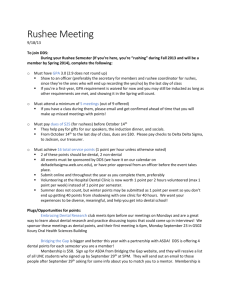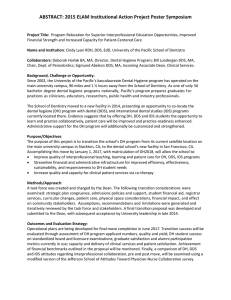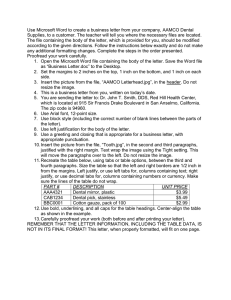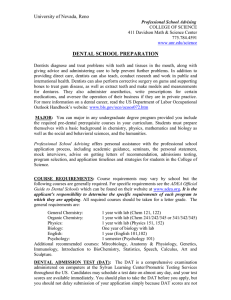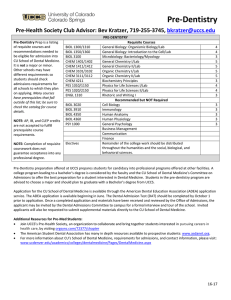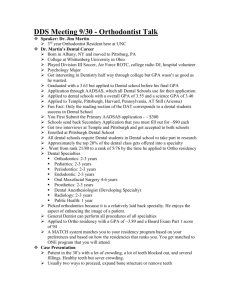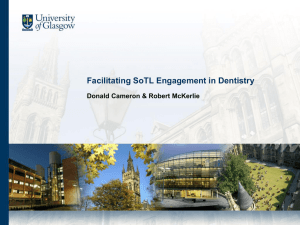atTRACTIVE CHOICES FOR STUDENTS: ANATOMY OF
advertisement
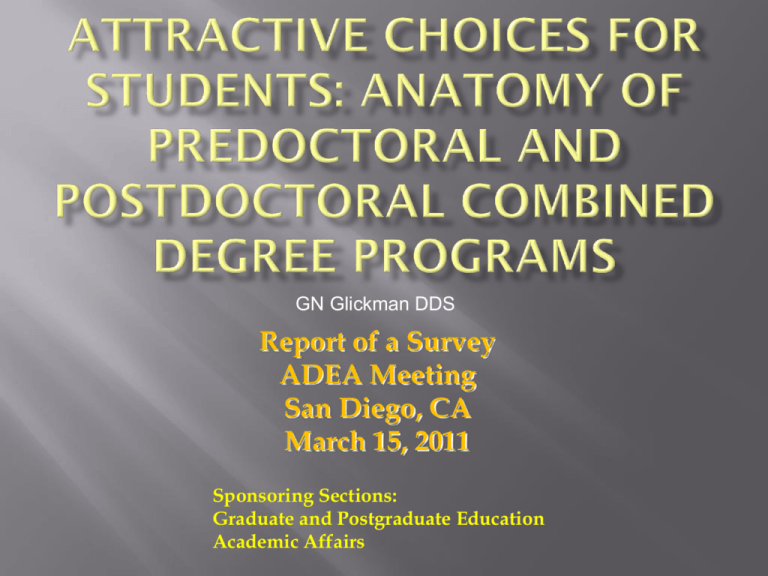
GN Glickman DDS Report of a Survey ADEA Meeting San Diego, CA March 15, 2011 Sponsoring Sections: Graduate and Postgraduate Education Academic Affairs Survey of Dual-Degree Training Opportunities at U.S. Dental Schools (Roge, JDE, 2006) Purpose: describe access to information for dualdegree dental scientist training programs at U.S. dental schools Results & conclusions 22/56 schools reported T32 rewards from websites Surveys sent; 3 responded Unawareness of opportunities for predoc students Schools need to be proactive if programs exist Students themselves should be champions General survey sent 2X to academic deans LISTSERV Any combined programs ? Types offered ? Admission criteria? Length? Level of participation ? Mechanisms of awareness ? Positives & negatives 34 responses (58 schools) = 59% response rate 17 / 34 (50%) 17 / 34 (50%) YES NO 17 / 34 (50%) 17 / 34 (50%) YES NO 26 / 34 (77%) 8 / 34 (23%) YES NO PhD (17) MS (19) Oral Biology (10) Education (1) Craniofacial Bio (3) MS (4) HPE (1) MSD (7) MBA (7) MPH (6) Cert. Implant Dent. (3) Cert. Orofacial Pain (2) MD (3) DSc (1) Separate admissions criteria are specified for each degree or certificate. 18/26 (69%) Only one set of admissions criteria is needed for the combined degree. 8/26 (31%) Degrees are offered by separate institutions. 9/26 (35%) It is longer than a single degree program. 19/25 (76%) It can be the same length as a single degree program. 11/25 (44%) No to minimal participation. 6/20 (30%) Some participation. 10/20 (50%) Considerable participation. 2/20 (10%) Combined degree program is mandatory. 2/20 (10%) Web-site (24) AADSAS app (0) PASS app (2) Institution catalogue (17) At interview (14) During orientation (8) Word-of-mouth (9) During a special seminar on career options (5) There is minimal advertising of combined programs (3) Coincides with school’s mission to train academicians/leaders/researchers Encourages research for both faculty & students Creates next generation of faculty Positive recruitment tool Attracts “excellent” students Saves students time (compared to doing 2 degrees separately) (economies of scale) Provides wider range of opportunities Additional degree detracts from clinical training Difficult for students to balance activities Complex arrangement (esp. if 2 sep schools) Scheduling challenges Students lose motivation Not enough faculty to mentor Postponement of earning potential Often requires customization of DDS curriculum Additional financial obligations THANK YOU gglickman@bcd.tamhsc.edu



